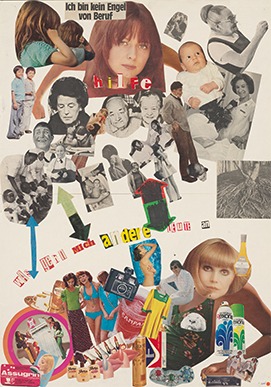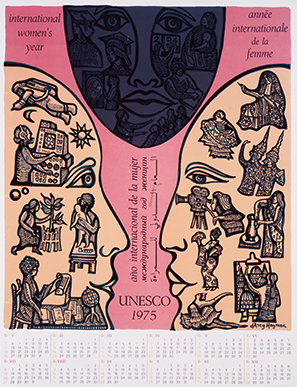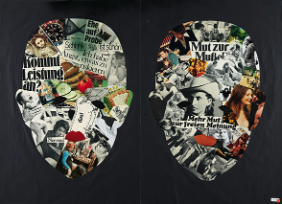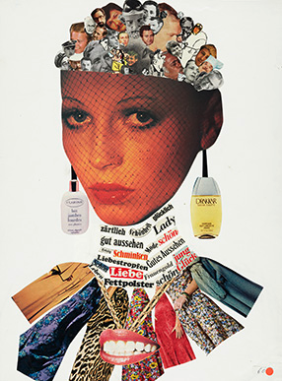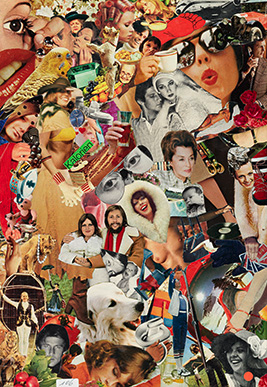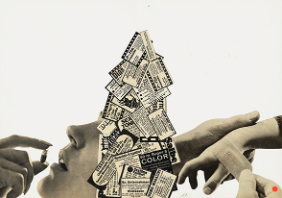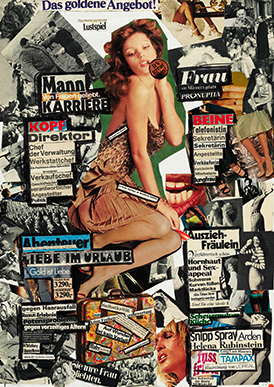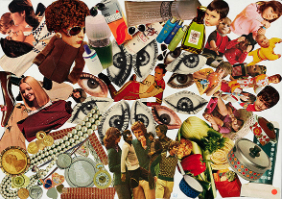In the run-up to the UN’s International Women’s Year in 1975, the National-Zeitung in Basel organised an appeal for people to submit collages on the theme of women. Some of these works were later exhibited in Bern and are still held in the archive of the Swiss National Library to this day.
By Beat Scherrer
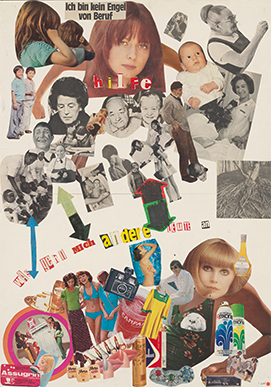
by C.H. and A.T., 1974
Looking at this collage produced by two sixth form students, we could interpret the message as feeling anxious about society’s pressures and constraints on the one hand, and feeling empowered to break free of them and carve out one’s own path on the other. Like many of the competition entries, this work addresses a number of conflicting situations in which women found themselves at the time: the empowered woman who goes her own way, versus the woman who plays a supporting role in society. The desire to break free and escape their situations versus acceptance of a reality in which they felt trapped, together with a fear of failing to meet (society’s) expectations.
Then, as now, there was a disconnect between the ideal of women and their lived experience, where the status quo was seen as restrictive. ‘Ich bin kein Engel von Beruf’ (‘I’m not an angel by profession’) reflects women’s self-perception at the time. The black and white pictures used on one side of the collage and coloured ones on the other underscore these contradictions.
Spotlight on women in 1975
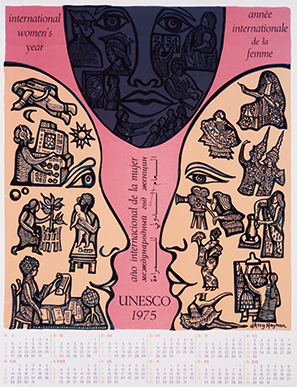
International Women's Year, 1975
© The d’Arcy Hayman Project
1975 was a landmark year in both the European and Swiss women’s movement. Internationally, the UN proclaimed 1975 International Women’s Year, and the now well-established International Women’s Day on 8 March was celebrated for the first time 50 years ago.
The fourth Swiss Women’s Congress was held in Bern from 17 to 19 January 1975 under the theme of partnership. Women’s suffrage had only been introduced at national level in Switzerland four years beforehand. At the congress in 1975 the popular initiative ‘For gender equality’ was launched and there were calls for a federal body on women’s issues to be set up. This call resulted in the establishment of the Federal Commission for Women’s Issues in 1976, while the counter-proposal on the aforementioned initiative was only adopted in 1981. The slow implementation of this legislation led to the first Swiss women’s strike ten years later, on 14 June 1991.
Collage competition and exhibition
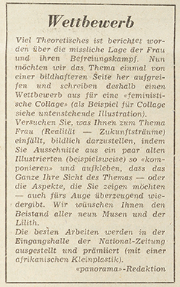
In view of International Women’s Year, the National-Zeitung newspaper in Basel printed this advert to announce a competition for ‘feminist collages’ in its supplement ‘nz-panorama’ on 24 August 1974. 321 entries were received, which were then exhibited in the newspaper’s lobby in the autumn of 1974. Perhaps the enthusiastic participation was helped by the ‘small African sculpture’ promised as a prize?
What is also striking from today’s point of view is the perspective and language chosen, starting with this appeal for people to create collages as a counterpoint to the many theoretical articles on the “plight of women and their struggle for emancipation“. The creation story was touched on in a subsequent issue as the editorial team found it “strange” that the first collages submitted were produced by a man.
The Swiss National Library then presented a selection of these collages in January 1975, together with photographs, posters, magazines, portraits and other documents as part of an exhibition to mark International Women’s Year and the 4th Swiss Women’s Congress in Bern. Just under 90 of these original collages are now held in the NL’s special collections.
The 1970s groove
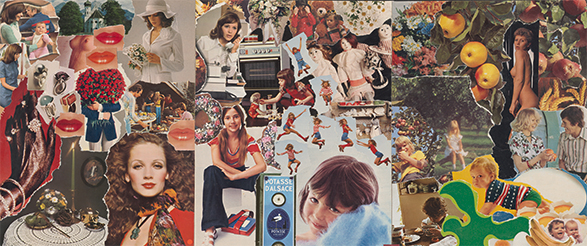
Back to the collages created in 1975. As with many of the entries, the 1970s groove comes across very clearly in this triptych image. Beauty and beauty products, youth and staying young, health and healthy eating, the joy of children, flowers and nature – these themes, which are more or less clichéd, come up time and again. They visually convey a perception of women and their role that was common at the time, both in women’s and men’s eyes. Although men were not generally suspected of being angels, they obviously had something to say about the topic as at least four of the ten winning collages were produced by men!
Bibliography and sources
- Federal Commission for Women's Issues: Meilensteine der Gleichstellung in der Schweiz (slide presentation on the history of equality in Switzerland, part 3), Bern, 2020 (in German, available also in French and Italian)
- Elisabeth Joris: ‘Frauenbewegung‘, in: Swiss Historical Dictionary (HLS), version dated 29.07.2024
- ‘Schweizerischer Kongress für die Interessen der Frau’ (Swiss Congress on Women), Wikipedia article (in German; accessed on 17.1.2025)
- National-Zeitung, Basel, 1877 - 1977
- ‘Ausstellungen’, in: Swiss National Library: 1975 report, p. 21 (in German)
Last modification 30.12.2024
Contact
Swiss National Library
Prints and Drawings Department
Hallwylstrasse 15
3003
Bern
Switzerland
Phone
+41 58 462 89 71


